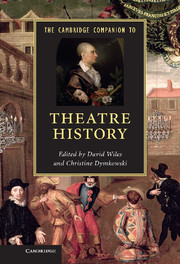Part V - How?
Published online by Cambridge University Press: 05 February 2013
Summary
How?
It is an illusion to think that history exists and that historians subsequently choose how to study it. Rather, the method of historical study defines the outcome, the history that is created. Historians work from sources, and sources tend to be gathered together in libraries, museums, databases and other forms of archive because somebody has anticipated that researchers in the future may find this material useful, while judging that other material can be discarded. Thus the present does much to determine how the past will be regarded by future historians, even though the best will characteristically work across the grain and use sources in ways that could never have been anticipated.
Documents, often loosely conceptualised as ‘facts’, sit at the heart of the historian’s work. The first chapter in this section, Chapter 15, takes up one particular constellation of documents in order to address a specific historical problem. This chapter is concerned with the nature of historical argument and the discipline of responsibility to facts that governs all historical work. Decisions to be made usually involve trust. We consider the difficulty of knowing anything for sure, when so many ‘primary’ source materials derive ultimately from word of mouth. Most of us think that what we see with our own eyes is more reliable than what we are simply told. Chapter 16 considers one particular category of evidence that might be found in an archive, pictures, which often create the impression that, unlike words, they are unmediated records of how the play was actually done. The truth is that the historian needs a high level of visual literacy in order to determine how and why a given image was created, and how, in a different historical environment with a different mode of seeing, that image might once have been interpreted. Chapter 17 is concerned with the way documentary material has been collected into archives, for the use of future scholars and practitioners. We see how the gathering of data is increasingly regarded not as a hoarding of wealth but as an intervention upon the present, involving communication and distribution as much as accumulation.
- Type
- Chapter
- Information
- The Cambridge Companion to Theatre History , pp. 227 - 230Publisher: Cambridge University PressPrint publication year: 2012

